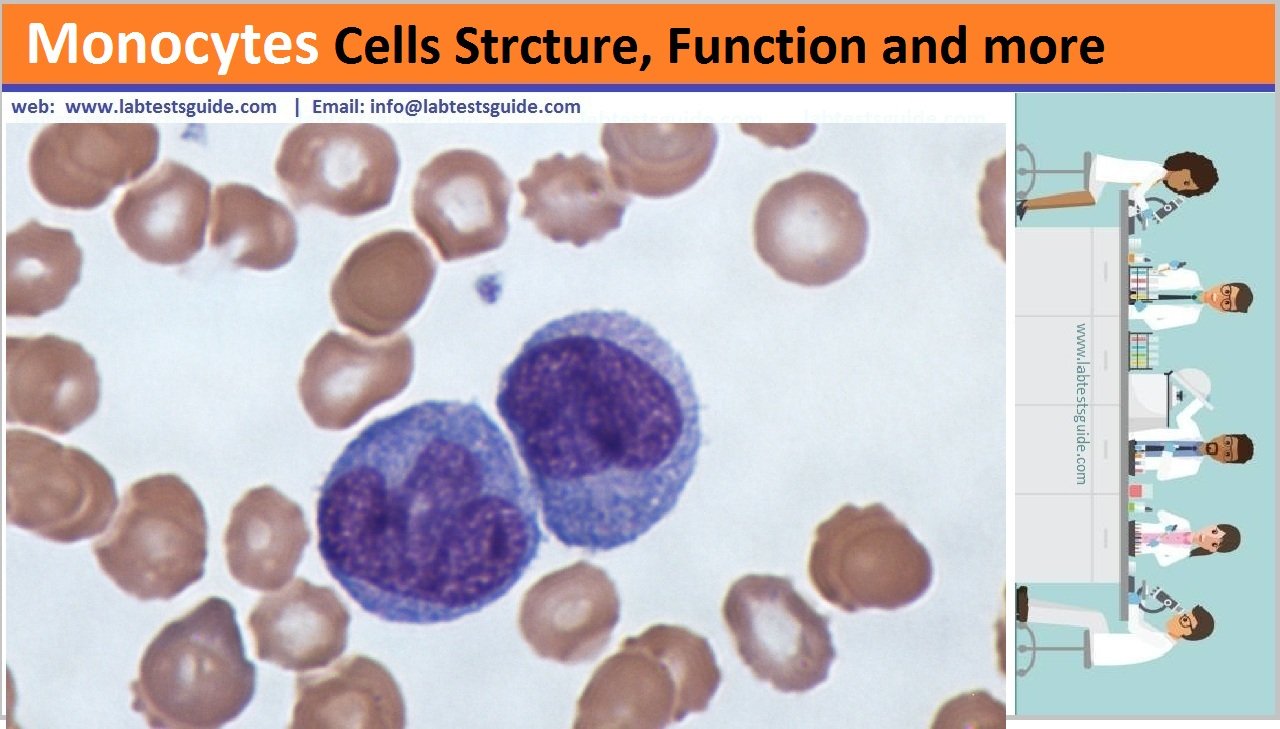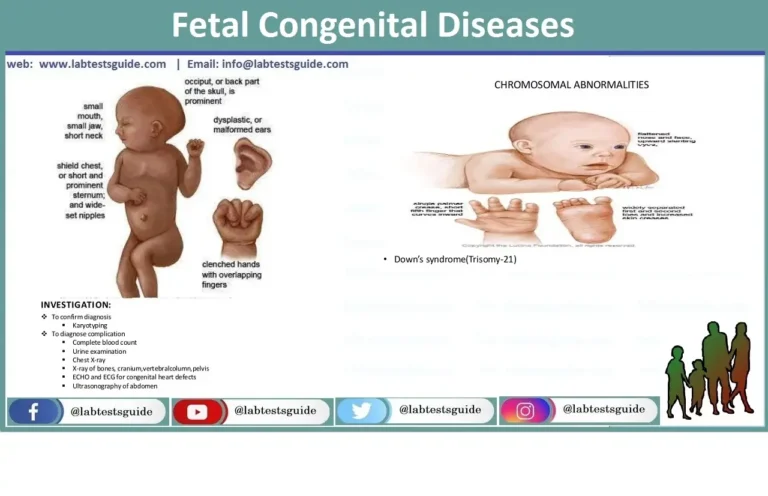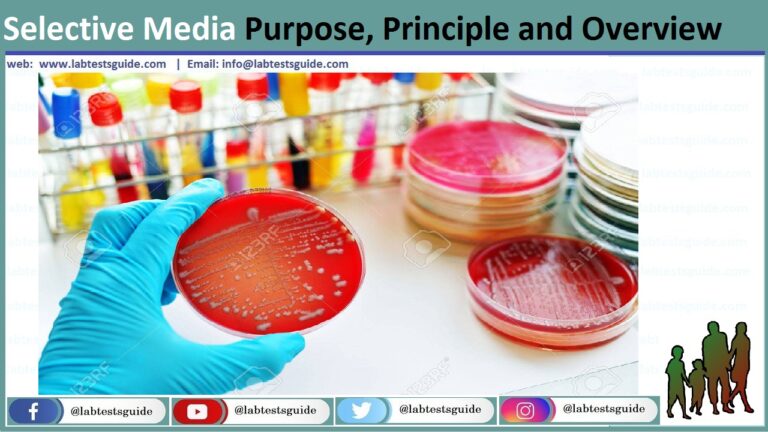Monocytes are a type of leukocyte, or white blood cell. They are the largest type of leukocyte and can differentiate into macrophages and myeloid lineage dendritic cells. As a part of the vertebrate innate immune system monocytes also influence the process of adaptive immunity. There are at least three subclasses of monocytes in human blood based on their phenotypic receptors.

Also Known as: Mono, Monocytes
Cells Panel: Neutrophils, Lymphocytes, Monocytes, Eosinophils, Basophils
Structure of monocytes:
- Monocytes are typically easily recognized by their large size of 12–20 µm and indented or horseshoe-shaped nuclei.
- Neucleus: Larg Lobulated, Idented, with fine chromatin
- Cytoplasm: Light basophilic, may contain fine granules or vacuoles
- Macrophages are monocytes that have left the circulation and phagocytize debris, foreign pathogens, worn-out erythrocytes, and many other dead, worn out, or damaged cells.
Function of Monocytes:
Monocytes in the circulation are precursors of tissue macrophages that are actively phagocytic. Monocytes circulate in the blood for 1-3 days, and then migrate into body tissues, where they transform into macrophages. They will phagocytose dead cells and bacteria. Some monocytes can also transform into osteoclasts.
Referance Ranges:
| Test Name | Male | Female |
| Monocytes | 2- -10 % | 2- -10 % |
Monocytes increased in:
- Infections.
- Collagen vascular diseases.
- Carcinoma.
- monocytic leukemia.
- Lymphoma.
Basophils Increased in:
- Chronic myelocytic leukemia.
- polycythemia vera.
- Hodgkin’s disease.
- In some anemias.
Related Articles:
Home | Blog | About Us | Contact Us | Disclaimer
Possible References Used



